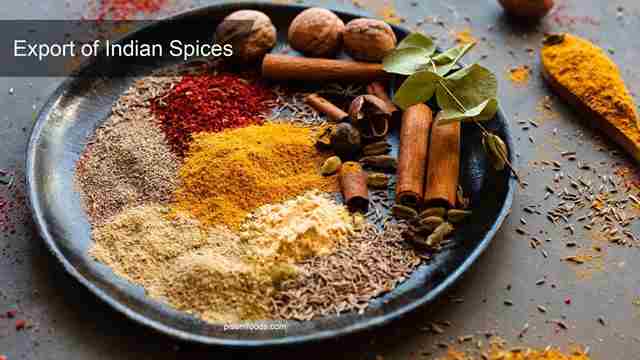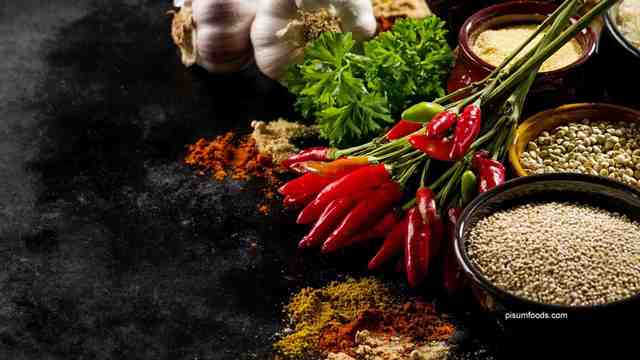 Translate
Translate Translate
TranslateIndia is popularly known as ‘the land of spices.’ The country has been exporting spices since ancient times to different parts of the world. The spices export from India has been on a rise due to the unique aroma, texture, and flavour of the spices. The medicinal properties of these spices are also popular. India produces around 75 of the 109 varieties listed by the International Organization for Standardization. This accounts for half of the global trading in spices. The export of spices from India has therefore been one of the fastest-growing businesses in recent times.

Spices worth US$ 3.65 billion were exported from India in the financial year 2020. 1.10 million tonnes of spices and spice products valued US$ 2.80 billion were exported from the country in the year 2019 while in 2018, 1.02 million tonnes of spices valued US$ 2.78 billion were exported. Therefore, we see that the export of Indian spices registered an increase of 7% in volume. According to the statistics provided by official websites, spices export value from India stood at around US$ 3.65 billion in the fiscal year 2020. This is a 10% year on year growth. Thus the demand for Indian spices has been rapidly increasing and is also expected to increase in the future.
Spices Products export from India has been increasing over the years. Indian spices are not only famous for their unique aroma and taste but also have many health and medicinal benefits. Various spices are exported from India including Chilli, Cumin, Turmeric, Cardamom, Ginger so on and so forth. Here are some of the major spices exported from India.

India is one of the world’s biggest consumer, producer and exporter of Chilli. Chillies are grown across several states in India including Madhya Pradesh, Maharashtra, Andhra Pradesh and Karnataka. Chilli is one of the largest exported spices from India. India’s chilli exports stood at 468,500 tonnes in the year 2018-2019.
Cumin seeds are used in various cuisines around the world for their beautiful aroma. Besides its culinary uses, cumin is also said to have health and fitness benefits. It is one of the most essential ingredients in Indian cuisine. The cumin exports stood at 180,300 tonnes while the turmeric exports at 133,600 tonnes.
India is one of the largest exporters of Turmeric globally. Different varieties of Turmeric are exported to various countries in the world including Brazil, Germany, Malaysia and so on. Turmeric is useful in many industries including cooking and cosmetics. It also has some health and medicinal benefTurmeric India is one of the largest exporters of Turmeric globally. Different varieties of Turmeric are exported to various countries in the world including Brazil, Germany, Malaysia and so on. Turmeric is useful in many industries including cooking and cosmetics. It also has some health and medicinal benefits.
Cardamom seeds are basically seeds of a plant of the ginger family. Cardamom is used as a spice and also has several medicinal properties. The annual Production of Indian green cardamom is around 22,000 - 24,000 Metric Tons. The cardamom exports in the year 2018-19 from India were around 860 tonnes.
Ginger is popular across various cuisines in the world due to its unique flavour. Being one of the most important spices in India, India is the major producer of ginger in the world. Other countries which produce ginger are China, Nepal and Indonesia. India exported around US$ 31.5 million worth of ginger in 2018.
Pepper is primarily the dried unripe fruit of a plant called piper nigrum. It has a pungent smell and a hot taste. Pepper is one of the most commonly used spices across the world. The pepper export from India saw a 21% increase in its volumes at 8,200 tonnes in the year 2019-2020.
Nutmeg is another spice which is exported to many countries in the world. Nutmeg is a seed of several species of the genus Myristica which can also be used as a ground spice. Nutmeg has many benefits and uses. It is used on a large scale in the manufacturing industry.
Fenugreek is basically an annual plant from the family of Fabaceae. It is used for its leaves and seeds which can be used as a herb or spice. Fenugreek plants and seeds have a characteristic strong odour. India on average exports about 21,800 metric tonnes of fenugreek each year.
Cinnamon is primarily the dried bark of various laurel trees in the Cinnamomum family. It is sweet in taste and has a woody fragrance in both grounds and sticks forms.India exports cinnamon to various countries in the world including the USA, Canada, Australia, UK and New Zealand
ndian Spices are very popular across the world. We export spices from India to around 140 countries in the world. The leading spices export destinations include the US, China, Vietnam, Hong Kong, Bangladesh, Thailand, the UK, UAE, Malaysia, and Sri Lanka. Spices export is conducted from India to several other countries too. Here are the major spice export destinations.

The United States is one of the biggest importers of Indian spices. The US accounted for the highest value in Indian spice exports in the fiscal year 2019. The value of exports stood at around 37.4 billion Indian rupees.
China is the second-largest importer of spices from India. The value of exported spices to China from India in the fiscal year 2019 was around 31.38 billion Indian rupees.
India also exports a large number of spices to Vietnam each year. The value of exported spices to Vietnam from India in the fiscal year 2019 was around 16.93 billion Indian rupees.
Indian spices are also exported to Iran. Approximately the value of exports of Indian spices to Iran was 12.05 billion Indian rupees in the fiscal year 2019.
Indian vendors export spices on a large scale to Thailand. The value of exported spices to Thailand from India in the fiscal year 2019 was approximately 9.24 billion Indian rupees.
Maintaining quality control and standards is essential for the food export industry. If standards are not maintained and your products don’t match the quality standards of the country, they may be disposed of or returned. The Spices Board of India is a body working towards the development of Indian spices and their promotion across the globe. The Spices Export Board of India provides quality control & certification for the exporters. They register exporters and their trade information. The board is primarily an international link between the Indian Spices exporters and importers. The board also participates in international fairs and exhibitions and promotes Indian spices.
Spices export from India is a thriving part of the export industry. Due to the increasing popularity of Indian spices and Indian cuisine, the demand for these spices is huge, especially from foreign countries. This is a good business opportunity for the Indian exporters, vendors and farmers to enter the international market and earn good revenues. But the process of Spice export can be complicated at times.
But don’t worry anymore! Pisum Foods is one of the leading spices exporters from India. We hold immense experience of the Food export industry and understand the industry and its workings inside out. We help our clients right from finding buyers, documentation until the final order is delivered. We are a legally certified food export company in India and abide by all the health and safety standards. Our executives are trained to help you with any issues which may occur during the export process. If you are looking for spices export from India, Contact Pisum now!